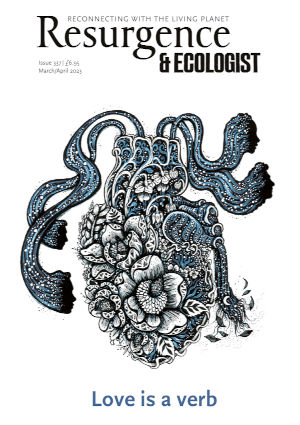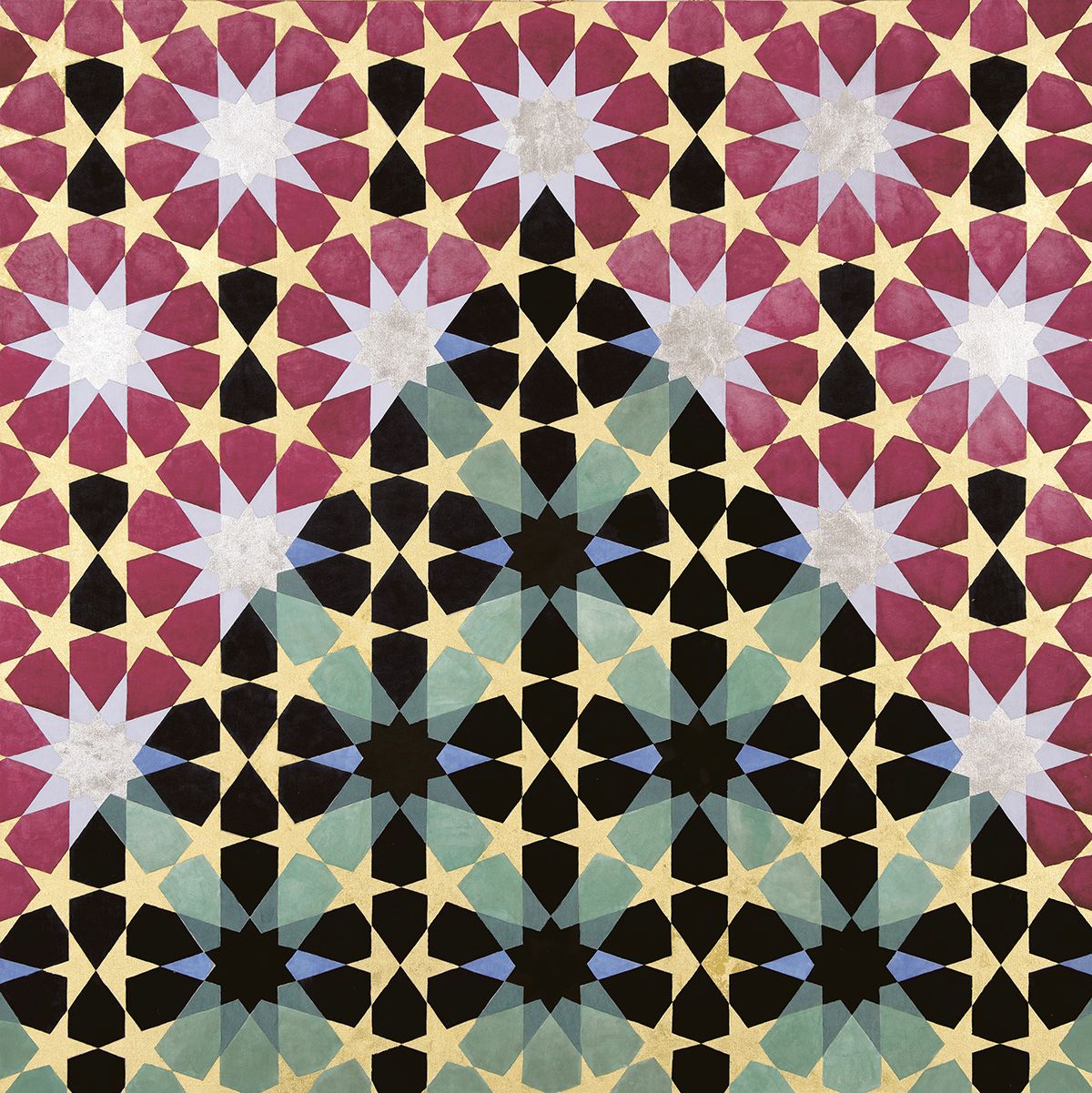While the idea of the Qur’an as the Word of God has been adequately discussed, and while the Sufis have explored the mysteries of divine revelation inside humanity, we have not yet adequately realised that the natural realm is also a site for Divine revelation and manifestation.
A key component of the Islamic teachings that are the signs of God – what the Qur’an calls the ayat – are to be found in three sites, namely the verses of scripture, the souls of humanity, and the natural realm.
Sufis have long recognised the mutual relationship between the written Qur’an and what we might call the natural Qur’an.
The 13th-century Sufi and mystic ’Aziz al-Din Nasafi, for example, referred to the Qur’an-e tadwini (written down in a book) and Qur’an-e takwini (Qur’an of Nature). And about this Qur’an of Nature he stated: “Each day destiny and the passage of time set this book [Nature] before you, chapter by chapter, verse by verse, letter by letter, and read it to you … like one who sets a real book before you and reads it to you line for line, letter for letter, that you may learn the content of these lines and letters.”
This comparison of scripture and Nature as theophanies of the Divine is an old and honoured analogy. In the Masnavi, the Sufi mystic and poet Mawlānā Rumi compares good and pure water to scripture itself:
“For the good ones, there is an inheritance of sweet water. What is that inheritance? We made them receive in inheritance the scripture.”
Sweet water, he writes, is like scripture itself, giving life to the earth and the heart alike.
There are incorrect and indeed destructive readings of both the Bible and the Qur’an that interpret humanity’s authority over the natural realm as a dispensation to do with it as we wish. Today, many recognise the environmentally destructive aspect of this misinterpretation, seeing the decimation of the natural cosmos as the destruction of our own home, the delicate circle of life and, ultimately, of our own selves.
But while many are waking up to environmental awareness and the interconnectivity of all life, we have been collectively much slower to recognise the spiritually destructive aspects of this violation of trusteeship (khilafat) that God has entrusted to humanity. It is the cosmic weight of this amaanat (trust) that the Qur’an refers to:
“We offered the trust to the heavens and the earth and the mountains. And they refused to bear it, being afraid. But humanity took it on.”
It is this trust that is our greatest source of honour, but if carried out improperly it becomes a fulfilment of the Qur’anic prediction that “we were unjust and foolish”, when we betray this trust.
Within the Qur’anic worldview, when God informs the angels that He is going to put a deputy (a khalifa) on Earth, the angels look into the future and see the negative potential of humanity: “Why would you place a deputy on Earth who is going to shed blood and cause mischief?” they ask.
God’s answer is not to deny humanity’s potential for bloodshed and mischief, but mysteriously to state: “I know that which you do not know.”
In other words, the potential for both bloodshed and mischief, as well as being the purpose of God’s creation, is within the potentiality of what it truly means to be human.
So the question for us today is which human we wish to be: the human being who consumes incessantly and destroys – fulfilling the angels’ worst expectations of us – or the trusted and trustee-worthy human being who is suited to be the caretaker for all of creation, and the deputy of God on Earth. This choice, which has a cosmic consequence for our very existence, is today reflected in our destruction or our caretaking of natural resources, including water.
This trusteeship, this spiritual concern for God’s creation, begins with an interconnectivity and the understanding of the oneness of all existence. When we operate from a perspective of oneness of being (wahdat al-wujud), we come to see that all existence, all being, is ontologically connected, and in fact one.
So much attention has been paid, and rightly so, to ensure that the scripture of the Qur’an is not desecrated. Yet how rarely do we offer the same respect and attention to the
Qur’an of Nature! In our lack of stewardship for creation, we are also depriving ourselves of one of the sites in which we can reflect upon the Signs of God, and come to see God as truth.
But let us get back to the Qur’an.
In the Holy Book, we are told: “From water God brought everything to life.” It is this verse (aya) that we see inscribed in so many ablution fountains in Istanbul, and inside the Sultan Ahmet Camii (Blue Mosque), and outside of the Ayasofia (Haghia Sophia).
Our very life, and our ability to see the Signs of God, is through the natural element of water.
Water is explicitly named in the Qur’an as an important sign of God, and, as such, is named over 60 times. Some 50 other references are to rivers and seas.
Here is one example:
Your God is One God, there is no deity other than Him,
the Most Gracious, the Most Merciful.
Truly in the creation of the heavens and the earth,
and the succession of night and day,
and in the ships that speed through
the sea with what is useful to humanity,
and in the waters God sends
down from the sky,
giving life thereby to the earth after its death …
in all of this, there are ayat for
people who use their intelligence.
Within the context of the Qur’an, water is typically described as being “sent down” from the sky, from the heavens, in the same way that God’s mercy and indeed Scripture are sent down (tanzil). It makes sense that in the arid climate of Arabia, the life-giving quality of rain would be seen as an all too real symbol of God’s mercy. The great scholars of Islam have seen these Qur’anic verses to be both literally referring to water and spiritually referring to mercy and knowledge.
In the philosophical Sufi text Mishkat al-Anwar (which translates as the ‘Niche of Lights’) the great scholar Abu Hamid Muhammad Al-Ghazali interprets water being sent down from heaven to the arid valleys in a metaphorical sense, where the water itself corresponds to ma’rifa (intimate knowledge of God), and says the valleys are none other than our hearts.
It is this same imagery, that of the waters that flow inside our hearts in the once dry but now full streams of ’ishq (love) and ma’rifa, that leads many Sufis to talk about the ‘Water of Life’ (aab-e hayaat) to symbolise the highest levels of spiritual attainment. Rumi stated in the Masnavi:
“The Prophet said, ‘Amongst my people are some who are one with me in nature and aspiration.
‘Their spirits behold me by the same light by which I am beholding them.’
“Without the two sahíhs and hadiths and traditionists; nay, (they behold him) in the place where they drink the Water of Life.”
To put this another way, our very hearts, and our ability to know God intimately, are connected to the external symbols of life-giving water. As outside, so inside; as below, so above.
The Qur’an is clearly not a science book, and while it contains what I believe can be called an eco-spiritual ethics, it is not a modern scientific environmental textbook. What it does do though is establish a close relationship between natural phenomena (signs of God), God, and us.
If humanity is to serve as a mirror for divinity, and if the microcosmos (’alam-e saghir) – that is to say, the human being – has an ontological connection with the macrocosmos
(’alam-e kabir), then it comes as no surprise that heavenly and celestial realities reflect Earthly realities. This is especially true for those natural phenomena that are most essentially symbols of mercy and life-giving qualities: water, gardens, rivers, shade.
Within the Islamic tradition there are multiple references to the function of water, not just here on Earth, but also in Paradise, and perhaps the most crucial of these is that of Paradise as a garden through which four important rivers flow. More explicitly,
The parable of the paradise which the God-conscious are
promised [a paradise] wherein there are rivers of water
which time does not corrupt,
and rivers of milk the taste whereof never alters,
and rivers of wine delightful to those who drink it,
and rivers of honey of all impurity cleansed,
and the enjoyment and of forgiveness from their Sustainer.
As Cemalnur Sargut, the contemporary Turkish female Sufi master, states, each of these rivers can be taken both literally and metaphorically:
The rivers of pure water are for humility (tavazo), always flowing towards that which is lowly, and smoothing all the harshness on their path.
The river of milk is for ’ilm-e ladduni, knowledge from Divine presence, for that knowledge which comes from the Murshid (spiritual guide) like mother’s milk.
The river of wine is that of Divine love.
The river of honey is that of tawhid, of bringing together all of the qualities in the Insan-e Kamil (perfected human being), when humility, love of God, and ’ilm-e ladduni come together.
When one has all these together, it offers a taste of paradise.
Yet the Insan-e Kamil resides not just in paradise, but here on Earth. And what would be the eco-spiritual ethical duties of those who aspire to be full human beings, worthy of the Divine Trust today?
If the battles of the 20th century were partially over oil, it is very likely that some of the wars of the 21st century will be fought over water, unless we rise above our respective and collective selfishness and develop an ethic of generosity and hospitality. At the end of the day, water belongs not to us, but to God. This same notion of collective ethics is made explicit in the teachings of the Prophet. The Prophet stated that people are co-owners in three items: water, fire and pasture.
If there is excess water for one group of people, the Qur’an states, it is not to be sold, but given freely to others in need:
“And tell them that water is to be divided between them in equity, with each share of water equitably apportioned.”
Time and again we are reminded in the Qur’an to eat and drink but not be excessive. And it is these types of hadith (commandment) that remind us that our own usage of water is tied to other people’s usage; that just because one of us has access to sufficient resources, that does not absolve us of responsibility for all of us.
In calling for us to fulfil our trusteeship (khilafat) towards creation, we are not merely doing that which is environmentally just and necessary, but we are also fulfilling the oath that we took towards God. In providing responsible caretaking and sharing for the Qur’an and Nature, we are also assuring that our children and our children’s children will have the chance to keep seeing the Signs of God all around, and inside their own selves. The responsible sharing of the planet’s shared resources demands no less of us.
May we be like this water, always reflecting the heavens, always flowing from the high ground to the lowly, always purifying, and always smoothing.
May we be like this, coming from the heavens, and flowing back into the oceans, which in reality are all connected. The Oceans of Oneness.








